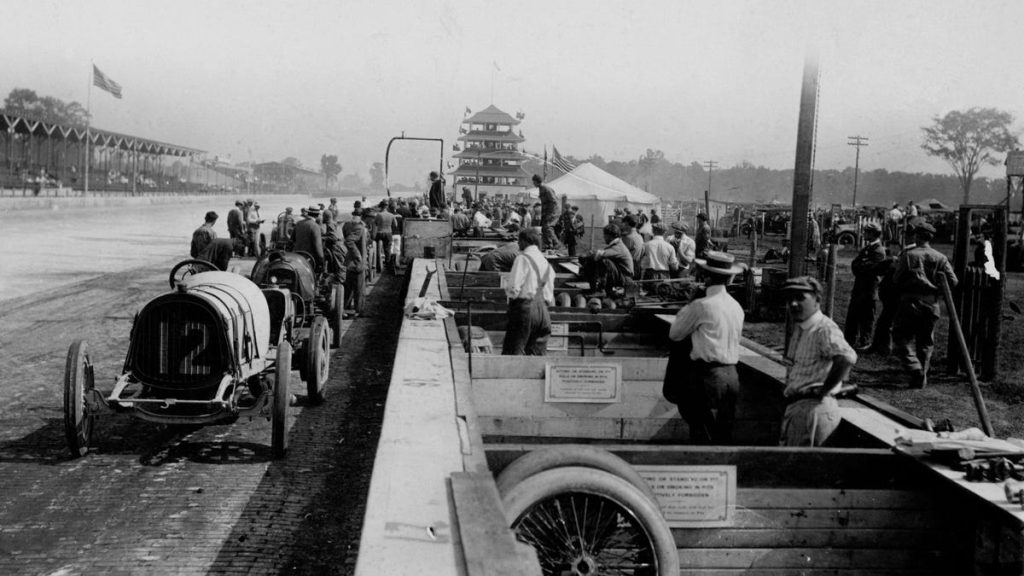Who Really Won the First Indy 500?

A view of the pits and original Pagoda on the front straightaway during the Indianapolis 500 on 30 May 1911 at the Indianapolis Motor Speedway, Speedway, United States. Image: (Photo by Nathan Lazarnick/Hulton Archive). (Getty Images)
The Indy 500 took place this past weekend, as it has more or less continuously since 1911, when Ray Harroun won the first race in his Marmon Wasp. Or did he?
This is well-known history to die-hard fans, but maybe it’s new to you: The long-accepted winner of the first Indy 500 may not have actually been the winner. Another drive may have lost first place due to primitive technology and a chaotic crash.
This weekend’s race marked the 108th time drivers have rounded the bricks of the Indianapolis Motor Speedway for 500 miles. (The racing was paused for World War I and World War II.) The cars, the track and the sport itself all looked very different at the start of this tradition. Engines were limited to 600 cubic inches (!) and every car needed to prove it was able to do 75 mph for at least a quarter-mile. If you had that going for you, you were in. An incredible 80,000 people reportedly attended the first Indy 500 on May 30, 1911. Forty drivers competed for first place and a $34,250 purse — a shade over $1 million in today’s money.
There were several crashes and three fatalities at the first Indy. One of those crashes may have robbed a man of his place in the history books. From The New York Times in 2011:
Steering his Lozier racecar into the final miles of the International Sweepstakes 500-Mile Race on May 30, 1911, Ralph K. Mulford believed he had “a clear lead over everyone else,” he wrote in Automobile Quarterly in 1969.
Yet when he arrived in the winner’s circle after taking three extra “insurance” laps, race officials were already congratulating Ray Harroun — still recognized in this centennial year as the race’s first winner.
Protests were filed immediately, but after a full night of review, Harroun remained the winner and Mulford the runner-up.
So what happened? A crash that sent a car into the judging stands, as well as the malfunction of the new-fangled mechanical timing system, may have robbed Mulford of the first-place title. The race’s founder, Carl Fisher, also reportedly wanted a Hoosier to win, preferably in a Marmon. Mulford drove a Lozier and hailed from Brooklyn, which may explain why his post-race protests fell on deaf ears.
There remains a tense controversy between Harroun-heads and Mulfordites to this day. From NYT:
Donald Davidson, the Speedway’s historian and a steadfast defender of Harroun’s being the real winner, says the reporters have ignored some crucial facts.
He points to a 1911 article in Motor Age that said on lap 193 Mulford made a two-and-a-half-minute pit stop. Harroun, traveling at a steady 75 miles an hour, would have made up more than a lap in that time, putting him ahead of Mulford. Records also show that Harroun needed only four stops for tire changes; Mulford made at least 11.
“It was a tortoise and the hare race,” Mr. Davidson said. “Mulford would pull ahead, but then Harroun would catch up.”
One of the most famous automotive races in history, and we may never know who truly won it. For now, Harroun officially holds the title.




